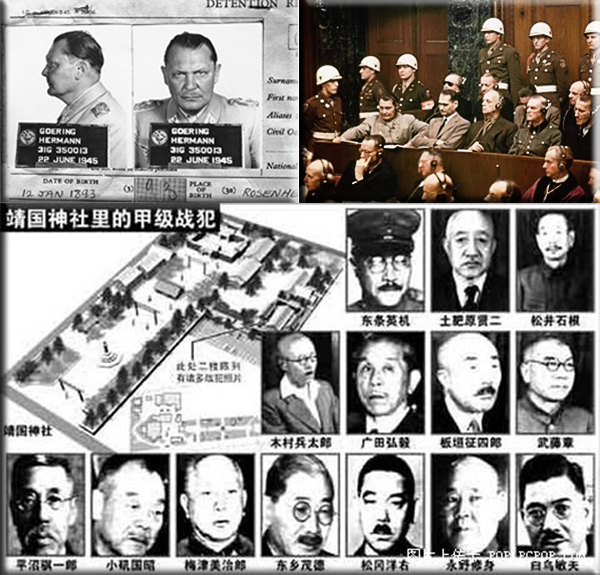
Allies promise prosecution of war criminals on January 13, 1942
Allies promise prosecution of war criminals: On this day, representatives of nine German-occupied countries meet in London to declare that all those found guilty of war crimes would be punished after the war ended. Among the signatories to the declaration were Polish General Wladyslaw Sikorski and French General Charles de Gaulle. The core of the declaration was the promise of “the punishment, through the channels of organized justice, of those guilty of, or responsible for, these crimes, whether they have ordered them, perpetrated them, or participated in them”.
Knowledge of German atrocities occurring in Poland and Russia were reaching both the Allied governments and the exiles from the countries in which the butchering of innocents was taking place. News of Jews, political dissidents, and clergy being systematically murdered, tortured, or transported to labor camps as the Nazi ideology advanced along with Hitler's armed forces increased the resolve and solidarity among the Allies to defeat the Axis.
Also on this day: President Franklin D. Roosevelt establishes the U.S. War Production Board, with business executive Donald M. Nelson as its chairman.
This was not the first time Roosevelt called on Nelson. In 1940, the president asked Nelson, then executive vice president of Sears, Roebuck and Co., to head up the National Defense Advisory Commission. As Roosevelt established agency after agency to coordinate the transition of industry from peacetime to wartime production, Nelson skipped among jobs, becoming director of purchases for the Office of Production Management and, in August 1941, director of the Supply Priorities and Allocations Board. The War Production Board, created to establish order out of the chaos of meeting extraordinary wartime demands and needs, replaced the Supply Priorities and Allocations Board.
As chairman, Nelson oversaw the largest war production in history, often clashing with civilian factories over the most efficient means of converting to wartime use and butting heads with the armed forces over priorities. Despite early success, Nelson made a major judgment error in June 1944, on the eve of the Normandy invasion, when he allowed certain plants that had reached the end of their government/military production contracts to reconvert to civilian use. The military knew the war was far from over and feared a sudden shortage of vital supplies. A political battle ensued, and Nelson was eased out of his office and reassigned by the president to be his personal representative to Chiang Kai-shek in China.
History Channel / Wikipedia / The Atlantic / National WWII Museum.org / Office of the Historian.gov / The Atlantic / USHMM.org / WW2 in Color
Image: Hermann Goering, once the leader of the formidable Luftwaffe and second in command of the German Reich under Hitler, appears in a mugshot on file with the Central Registry of War Criminals and Security Suspects in Paris, France, on November 5, 1945. (AP Photo, The Atlantic); The Nuremberg Tribunal of 1945-46; Japanese War Crimes
Wikipedia Photo: World War II, The Holocaust. Sources: United States Holocaust Memorial Museum USHMM, History 1900s, Internet Masters of Education Technology IMET, Techno Friends, Veterans Today, Concern.
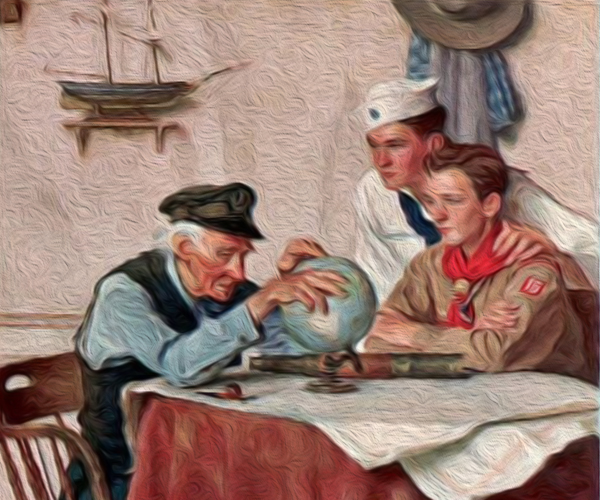
Understanding Military Terminology - foundation geospatial-intelligence data
(DOD) Foundation geospatial-intelligence data:
The base underlying data to provide context and a framework for display and visualization of the environment to support analysis operations and intelligence, which consists of: features; elevation; controlled imagery; geodetic sciences; geographic names and boundaries; aeronautical, maritime and human geography. Wikipedia / Joint Point 2-03)
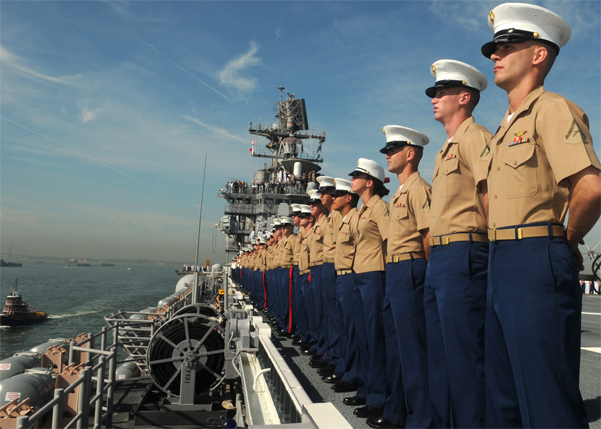
The Old Salt’s Corner
Reporting aboard a ship
When reporting to the ship for the first time you are required to be in a clean, proper, and complete uniform with your original orders. In addition to your orders, bring a copy of an updated Record of Emergency Data (commonly known as a “Page 2”) and a filled out Serviceman’s Group Life Insurance (SGLI) form as these documents will be needed by the Ship’s Office (you may obtain these documents from your local Personnel Support Detachment, PSD prior to departing for AT). You should report no later than 0730 on the day stipulated on your orders. If reporting while the ship is in port, enlisted personnel will report via the “afterbrow”, usually the ramp leading from the pier to either a sponson deck or one of the aft aircraft elevators (if reporting to a carrier). Officers will report via the “officers brow” leading to the Quarterdeck. Note: only larger ships, such as aircraft carriers and large amphibious ships, have two brows. Also, the officer’s brow is not always the forward one (e.g., it is aft on all Nimitz class carriers). Cruisers and all smaller ships usually will have one brow. Be sure to find out before hand how the ship you will report to is configured.
All Navy ships fly the national ensign (i.e., the United States Flag) from the stern while not actually underway. Remember to stop at the top of the brow, face aft and salute prior to reaching the Quarterdeck when coming aboard during daylight hours. In this case, “daylight hours” range from 0800 to sundown, local time. Hence, there is no need to salute the ensign if reporting aboard at 0730. Have your I.D. card and orders ready. Upon reaching the Quarterdeck, salute, and say “request permission to come aboard, sir”. In some cases, the person manning the watch may be junior to you or in some cases, may not even be an officer. Nevertheless, call him or her “sir” as they represent the authority of the ship’s commanding officer. Hold the salute until you receive permission to board, then step to the side to present your orders to the Junior Officer of the Watch (JOOW) or Junior Officer Of the Deck (JOOD). Make sure the original copy of your orders is signed with the time and date you reported aboard by the JOOD or Petty Officer of the Watch.
Keep in mind that boarding any Navy ship is similar to entering a Navy installation and you are giving full consent to a search of your bags and baggage just by being there. For enlisted personnel, it may be a good idea to tie or tape your belongings in small bundles in your seabag that will not come apart or unfold and are easily re-packed if you have to dump your bag. This also saves time when it comes time to stowing your gear. Although baggage inspection is not the norm when reporting aboard, be prepared to submit your baggage if requested to do so (e.g., this might occur during times of international tension such as Desert Shield/Desert Storm).
Most ships will have a designated collateral duty Reserve Liaison Officer (RLO) or equivalent individual. After signing your orders, a member of the Quarterdeck detail will contact the RLO who will act as your initial contact and guide. This individual will most likely accompany you through the process of checking onto the ship. The usual first step is a visit to the ship’s personnel office where your orders will be processed. In addition to your original orders, the ship’s office will also ask for a copy of your Page 2 and SGLI Forms. Remember to retain a copy of your original orders and keep them on your person at all times during your AT.
Unlike Annual Training at a shore command, officer’s paperwork is not handled by a Personnel Support Detachment (PSD) aboard ship. The Administration Department of the ship handles all officer records and pay. If reporting to a carrier, you will turn in your paperwork to the Captain’s Office, which also falls under the Administration Department. Shortly after reporting aboard, you will need to report to the appropriate Administration Department’s office to turn in you paperwork and set up pay for your period of AT.

“I’m Just Sayin’”
Are there any unguided missiles?

“Thought for the Day”
“The faintest ink is more powerful than the strongest memory.”
~ Old Chinese Proverb

“What I Have Learned”
“Everybody is ignorant, only on different subjects.”
~ Will Rogers

Bizarre News (we couldn’t make up stuff this good – real news story)

SALT LAKE CITY, Utah - In the U.S.’s fourth reported case, a state issued a driver’s license even though the applicant was photographed wearing a colander (as a “religious covering”, the only “hats” legally permitted in such photos).
Jessica Steinhauser said the Motor Vehicles office in Hurricane, Utah, simply shrugged at her affiliation with the Church of the Flying Spaghetti Monster (created in 2005 to offer the proposition that God’s existence is no better “proven” than the FSM’s). CBS News (Sacramento) Associated Press
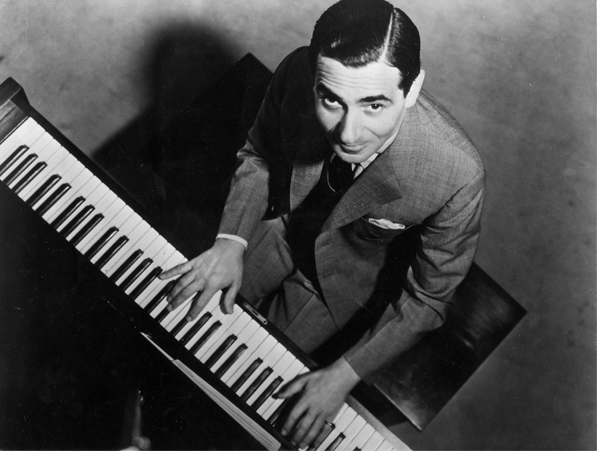
Mr. Answer Man Please Tell Us: I read somewhere that the great song writer Irving Berlin could not read or write music. If this is true, how did he compose?
Yes, it's true. The composer of countless beloved standards and show tunes including “Alexander's Ragtime Band”  , “White Christmas”
, “White Christmas”  , and “God Bless America”
, and “God Bless America”  couldn't read or write music. As you rightly suppose, neither can lots of modern songwriters, but here's the thing: musical illiteracy wasn't all that rare in Berlin's day either. Fact is, if the music industry thinks you've got enough commercial potential, it'll likely figure out a way to compensate for your technical deficiencies. All you need to do is come up with the hits.
couldn't read or write music. As you rightly suppose, neither can lots of modern songwriters, but here's the thing: musical illiteracy wasn't all that rare in Berlin's day either. Fact is, if the music industry thinks you've got enough commercial potential, it'll likely figure out a way to compensate for your technical deficiencies. All you need to do is come up with the hits.
Born in Russia and brought to the U.S. at age five, Irving Berlin dropped out of school in his early teens and taught himself to play the piano while working as a singing waiter from 1904 to 1907. He played almost entirely in the key of F-sharp, allowing him to stay on the black keys as much as possible. This wasn't unheard-of for a self-taught musician, since it's easier for untrained fingers to play the black keys (which are elevated and widely spaced) without hitting wrong notes. In a 1962 interview, Berlin said, “The black keys are right there, under your fingers. The key of C is for people who study music.”
So how did he write music if he couldn't write music? Simple - he got someone else to write it down for him. Music publishers in those days had professional arrangers on staff for that purpose, since many tunesmiths (a lot of black composers of ragtime, for instance) were similarly self-taught. Berlin would bring in whatever he had--sometimes just a whistled melody, sometimes the piano chords to go with it--and the arranger/collaborator would help fill in any blanks, then write it all out in musical notation. “Alexander's Ragtime Band”, the song that made Berlin a star, was dictated to one Alfred Doyle, who reportedly was paid 50 cents a page.
Getting tunes down on paper wasn't Berlin's only challenge. Having limited skills as a pianist, he couldn't easily change keys. Not to worry. Around 1910, as his career was starting to take off, he bought an upright “transposing piano” for $100. To one side of the keyboard was a small wheel. Turning the wheel shifted the keyboard right or left relative to the strings, positioning the hammers over higher or lower notes than they would ordinarily strike. Thus while still playing on the (mostly) black keys of F-sharp major, Berlin could hear the music in a variety of other keys. Transposing pianos were common back then; almost every music publishing house on Tin Pan Alley had one. Berlin called his instrument his “trick piano” and sometimes his “Buick”, presumably because of the transposing wheel's resemblance to a steering wheel (he later got another model that used a lever instead). He took it with him almost everywhere, including on vacation cruises with his family.
In 1916 Berlin asked a friend, the famous composer Victor Herbert, whether he should study music. Herbert said it wouldn't hurt but seemed unnecessary. Berlin took piano lessons briefly but quickly decided his time was more profitably spent dictating songs.
As Berlin's fame grew, he could afford to hire a secretary with formal music training to transcribe for him. The first of these assistants was pianist Cliff Hess, who held the position from roughly 1912 to 1917, followed after World War I by Arthur Johnston. At one point the young George Gershwin applied for the job, but Berlin thought him too talented to be happy as a mere amanuensis. Finally the job was taken by Helmy Kresa, a German-born musician trained at the Milwaukee Conservatory who worked as Berlin's musical secretary for almost 60 years, with time off for the occasional spat. Kresa was present at the creation of most of Berlin's songs and helped defend the composer against phony plagiarism charges. Berlin always maintained that his musical secretaries were essentially stenographers--the secretary may produce the letter, but the executive has to dictate it.
Berlin boasted of his ignorance of music. As early as 1915 he said that since he knew little about the rules of songwriting, he was free to violate them, “and the result was [often] an original twist”. Evidently he was also free of the demons that drive some creative sorts to an early grave. Having donated his transposing piano (the later version, with the lever) to the Smithsonian in 1973, he died in 1989 at age 101.
Research: Biography
• PBS
• Song Writers Hall of Fame
• Wikipedia

Where Did That Saying Come From?

“Buying the Farm:”
This is synonymous with dying. During WW1 soldiers were given life insurance policies worth $5,000. This was about the price of an average farm so if you died you “bought the farm” for your survivors.
Snopes / Phrases.org UK

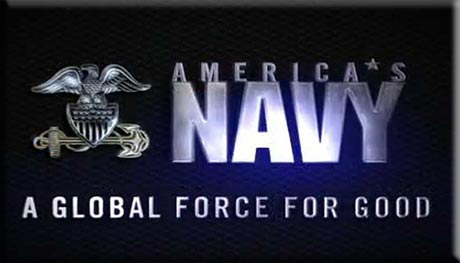
NAVSPEAK aka U.S. Navy Slang
Charting: A practice peculiar to Operations Specialists in which they take any personal gear left unstowed by the previous watch section (usually personal coffee cups) and fling them overboard, marking the location on the chart and subsequently inform the unfortunate owner of the location, remarking that he is free to return to retrieve it at his leisure.
E-ticket: When an officer has sex with an enlisted sailor it is referred to as the officer “getting his/her e-ticket punched”.
Paper Assholes: Gummed Reinforcements (office supplies).
Wheel Book: A small notebook, usually used by Division Officers or Chiefs to keep track of daily events and reminders
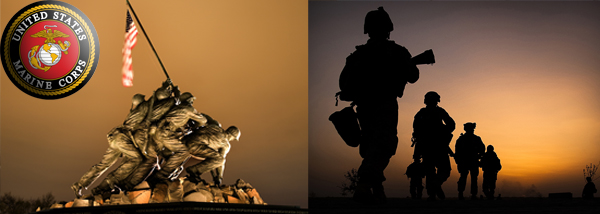
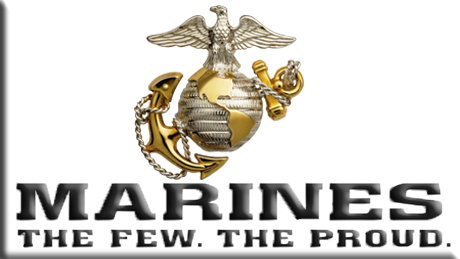
Just for you MARINE
Cosmolene®: A protective fluid placed on rifles and other metal objects which hardens and keeps the item from rusting or corroding. It must be removed before the item can be used. Also refers to something new as in, “it was still in cosmolene”.
Court Street: Liberty destination in Jacksonville NC for Marines from Camp Lejeune, Camp Geiger and MCAS New River. Until the 1980s the street was populated with bars, pawn shops and the bus station. The town cleaned it up and turned it into a “mall” sending the liberty crowd to the “second front”, a range of bars along US 17.
Cover: Caps, hats and other things worn on the head. Marines wear covers, regardless of what the headgear actually is (except for the Campaign Cover which is often called "The Hat"). A Marine's cover is always removed when indoors unless that Marine is armed. Also, in ranks, to align directly behind the Marine in front of you.
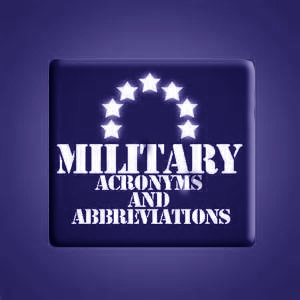
Navy Acronyms
RL - Restricted Line
A Line Officer is a commissioned Officer who is not eligible for sea command.
RTC - Recruit Training Command
Campus located in Great Lakes, Illinois, where Navy recruits train to become Sailors. Also known as Boot Camp.
SEAL - Sea-Air-Land (Team)
Members of the Navy Special Operations Force who specialize in direct action and special reconnaissance missions.
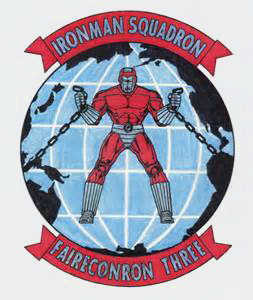
Naval Aviation Squadron Nicknames
VQ-3 - Fleet Air Reconnaissance Squadron 3: “Ironman”
Tinker AFB, Oklahoma

The Strange, Mysterious or Downright Weird

Furbys were all the rage in the late nineties - 1998 alone saw the sale of a whopping 27 million units - and remain popular to this day. But did you know that they’ve actually been cited as a national security threat?
The key to the dolls’ success lay in their robotic anatomy. Sophisticated programming enabled them to interact with toy owners and each other at an essentially unprecedented degree.
However, one thing these talkative toys couldn’t do, despite rumors to the contrary, was imitate things they’d heard their owners saying. “[Although] Furby is a clever toy”, said a spokesman, “it does not record or mimic voices”.
Apparently, no one bothered to tell the U.S. intelligence community. In 1999, Furbys were officially banned by the NSA, the Norfolk Naval Shipyard, and the Pentagon. Administrators allegedly worried that an employee might bring one into work wherein it could eavesdrop on a top-secret conversation and “start talking classified”.
Tiger Electronics—a division of the Hasbro toy company—was quick to issue a statement clearing their product’s good name. TE President Roger Shiffman said that the government’s misgivings were based on “funny yet incorrect rumors” and added, “The NSA did not do their homework. Furby is not a spy”.
Other wildly-inaccurate anti-Furby allegations Shiffman’s team has had to dispel include several claims that “the current Furby has the technology to launch the space shuttle. We [also] have one woman who is absolutely insistent that her Furby sings Italian operas.”
Furby was also denounced for supposedly interfering with electronic medical equipment, a myth that was busted by Canadian health scientists in 2000. Dr. Kok-Swang Tan, who helped conduct the research, recalled getting “some strange looks from colleagues who wondered why I was playing with a Furby in front of medical devices.”
Mental Floss 


SONG FACTS
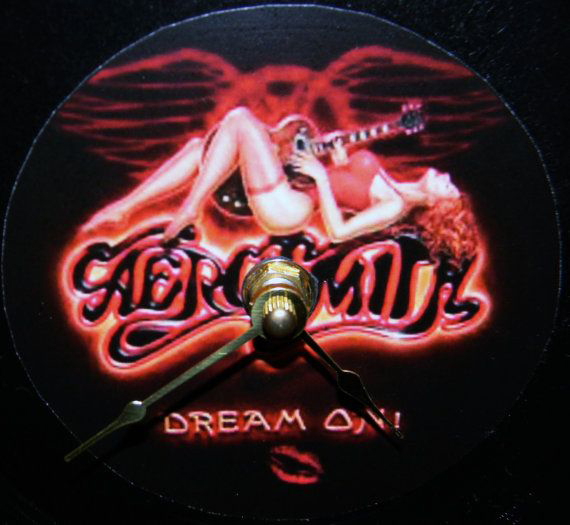
“Dream On by Aerosmith” - Aerosmith
Album: Aerosmith
Released 1973 
This was the first single Aerosmith released. Their manager had them share a house and concentrate on writing songs for their first album. Steven Tyler had been working on the song on and off for about six years, writing it in bits and pieces. He was able to complete it with the help of the rest of the band.
A breakthrough came when Tyler bought an RMI keyboard with money he found in a suitcase outside of where the band was staying. The “suitcase incident” became part of Aerosmith lore, as Tyler didn't tell his bandmates that he took the money, and when gangsters came looking for it, he continued to play dumb.
Tyler's father was a classically trained musician, and when Steven was three years old, he would lie underneath the piano and listen to his dad play. In his book, Does The Noise In My Head Bother You?, Tyler writes, “That's where I got that 'Dream On' chordage.”
Regarding the meaning of this song, Tyler explained: “It's about the hunger to be somebody: Dream until your dreams come true.” He added, “This song sums up the shit you put up with when you're in a new band. Most of the critics panned our first album, and said we were ripping off the Stones. That's a good barometer of my anger at the press, which I still have. 'Dream On' came of me playing the piano when I was about 17 or 18, and I didn't know anything about writing a song. It was just this little sonnet that I started playing one day. I never thought that it would end up being a real song.”
This was the song that saved Aerosmith from being dropped by their label. Aerosmith was the band's first album, and it sold poorly, mainly because their record company didn't promote it - Columbia records was focused on Bruce Springsteen's first album (released just a week earlier) at the time. Aerosmith was in danger of being dropped, but their management convinced Columbia to release “Dream On” as a single, and it showed promise, reaching #59 in the U.S. This single version was a different, more radio-friendly edit than the album version of the song, and it did well in the Boston area, especially on the powerhouse AM station WRKO. Columbia kept the band, and they became one of their biggest acts.
Aerosmithguitarist Joe Perry didn't like this song. He explained to Classic Rock magazine in 2002: “Back in those days you made your mark playing live. And to me rock 'n' roll's all about energy and putting on a show. Those were the things that attracted me to rock 'n' roll, but 'Dream On' was a ballad. I didn't really appreciate the musicality of it until later, but I did know it was a great song, so we put it in our set. We also knew that if you played straight rock 'n' roll you didn't get played on the radio and, if you wanted a top forty hit, the ballad was the way to go. I don't know if we really played it much live, in those days if you only had half an hour to make your mark, you didn't play slow songs. So it wasn't until after it became a single that we really started playing it.” (This interview is available at Rock's Backpages.)
Tyler played the piano on this song. It provided an interlude at concerts where he could sit behind a piano instead of running around on stage.
This song was not an immediate hit, but it took to the charts three years later after the band hit it big. In December, 1975, after their single “You See Me Crying”  didn't chart, Aerosmith's manager David Krebs convinced Columbia Records to re-release "Dream On," and it went to #6. The album was reissued in 1987 and 1993, after their albums Permanent Vacation and Get A Grip exposed them to a new audience who had not heard their early work.
didn't chart, Aerosmith's manager David Krebs convinced Columbia Records to re-release "Dream On," and it went to #6. The album was reissued in 1987 and 1993, after their albums Permanent Vacation and Get A Grip exposed them to a new audience who had not heard their early work.
In Bruce Pollock's interview with Steven Tyler, he talked about bringing the song to the band and what happened when it became more than just a piano piece. Said Tyler: “Never in a million years did I think I'd take it to guitar. When I transposed it to guitar Joe played the right fingers and Brad played the left hand on guitar. Sitting there working it out on guitar and piano I got a little melodramatic. The song was so good it brought a tear to my eye.”
Steven Tyler says that this was the only song on the band's first album where he used his “real” voice. He was insecure about how his voice sounded on tape, so for the other songs, he tried to sing a bit lower and sound more like black artists like James Brown.
Aerosmith first performed this song at the Shaboo Inn in Willimantic, Connecticut in November, 1971. They were paid $175 and a bottle of gin for the show.
Rolling Stone magazine (500 Greatest Albums of All Time - 173) / Aerosmith.com / TMZ / Rock & Roll Hall of Fame / Wikipedia / All Music
Image: “Dream On by Aerosmith” by Aerosmith

Trivia
● Jackrabbits are powerful jumpers. A twenty inch adult can leap twenty feet in a single bound.
● Desi Arnaz's father was mayor of Santiago, Cuba, and his mother the daughter of one of the founders of Bacardi Rum. His family went into exile after the coup that brought Fulgencio Batista to power in 1934. The family made its new home in Miami, Florida. Desi's best friend in high school - Al Capone, Jr.
● At greatest risk of injury to a professional football player's anatomy is the knee, which is involved in 58 percent of all major football injuries.

A Test for People Who Know Everything
What famous early American was the first person to use dental evidence to identify human remains?
● Answer for People Who Do Not Know Everything, or Want to Verify Their AnswerWikipedia
Answer to Last Week's Test
What is tapioca?
Answer: Tapioca is a starch that comes from the root of the Cassava plant. The roots look kind of like sweet potatoes. You peel them, squeeze out the juice and grind up what's left to make a flour. That's tapioca. Cooks use tapioca as a thickener in the same kind of way they might use corn starch. Tapioca is also a key ingredient in many puddings. Traditional tapioca pudding is milk and sugar plus tapioca, heated to activate the thickening. There are usually eggs added as well.

Joke of the Day
Did you hear about the woman who was married to a succession of three Microsoft employees and still died a virgin?
Her first husband was in Training, and kept teaching her how to do it herself.
The second was in Sales, and kept telling her how good it was going to be.
And the third was in Tech Support, and kept saying “Don’t worry, it’ll be up any minute now…”


























